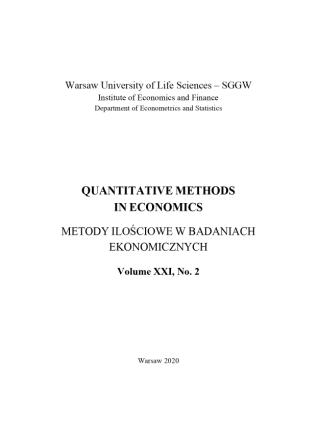THE RISK PREMIUM IN THE FOREIGN EXCHANGE MARKET. THE APPLICATION OF ARCH-IN-MEAN MODEL
THE RISK PREMIUM IN THE FOREIGN EXCHANGE MARKET. THE APPLICATION OF ARCH-IN-MEAN MODEL
Author(s): Katarzyna CzechSubject(s): Micro-Economics, International relations/trade, Financial Markets
Published by: Szkoła Główna Gospodarstwa Wiejskiego w Warszawie
Keywords: foreign exchange market; risk premium; ARCH-M model; forward premium puzzle; VIX;
Summary/Abstract: Forward premium anomaly is one of the most popular puzzles in the theory of international finance. The phenomenon is explained by, among others, the existence of non-zero risk premium in the foreign exchange market. The paper applies ARCH-in-mean models to assess whether there exists a time-varying risk premium in the USD/PLN and AUD/JPY foreign exchange markets. The results indicate the existence of a non-zero risk premium in the analyzed markets. As far as the USD/PLN is concerned, the risk premium takes negative values when the risk measured by conditional variance rises. The results suggest that when there is a surge in risk, the US dollar’s appreciation and Polish zloty depreciation increases. The results confirm the US dollar as a safe-haven currency that tends to appreciate during high-volatility and crisis periods. Moreover, the study shows that the risk premium in the AUD/JPY market takes positive values when the risk measured by conditional variance rises. It implies that when there is a mount in risk, the appreciation of Japanese yen increases. Furthermore, research results reveal the positive and significant relationship between stock market uncertainty and exchange rates conditional volatility.
Journal: Metody Ilościowe w Badaniach Ekonomicznych
- Issue Year: XXI/2020
- Issue No: 2
- Page Range: 71-79
- Page Count: 9
- Language: English

